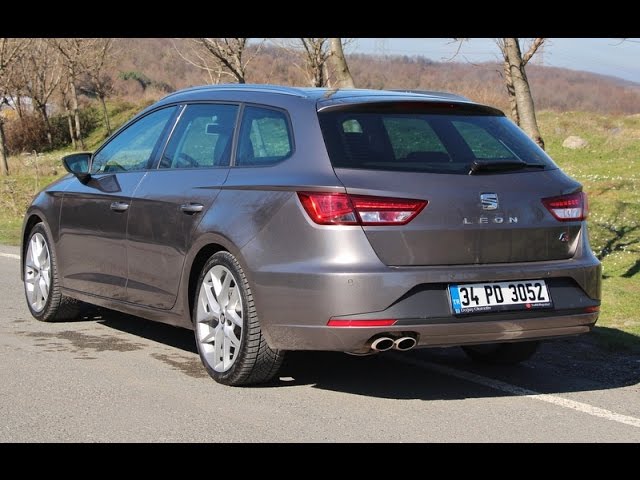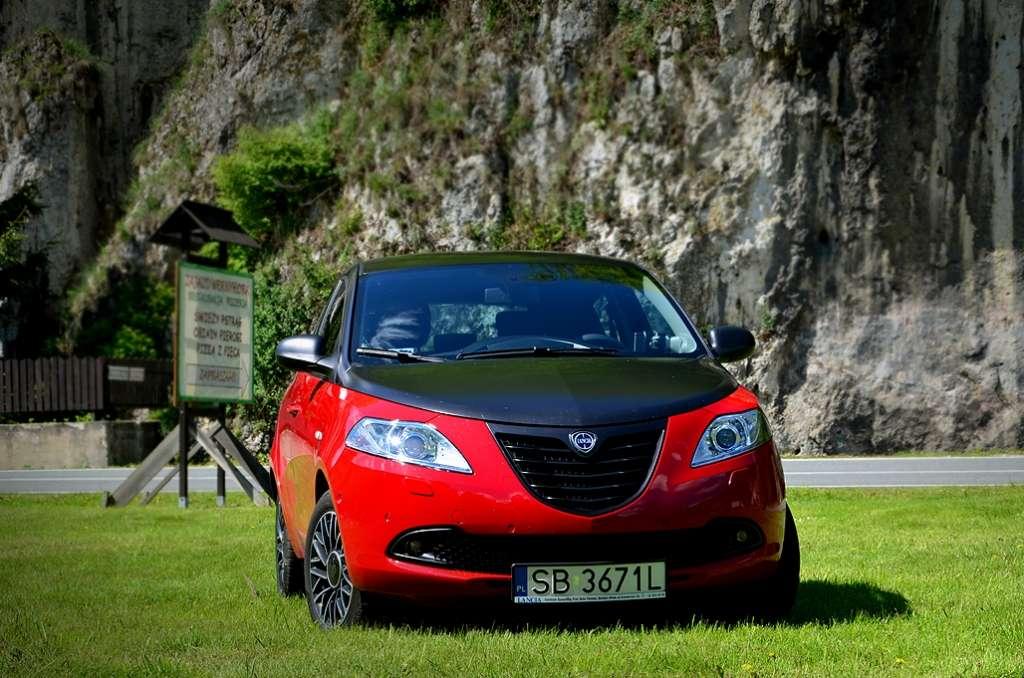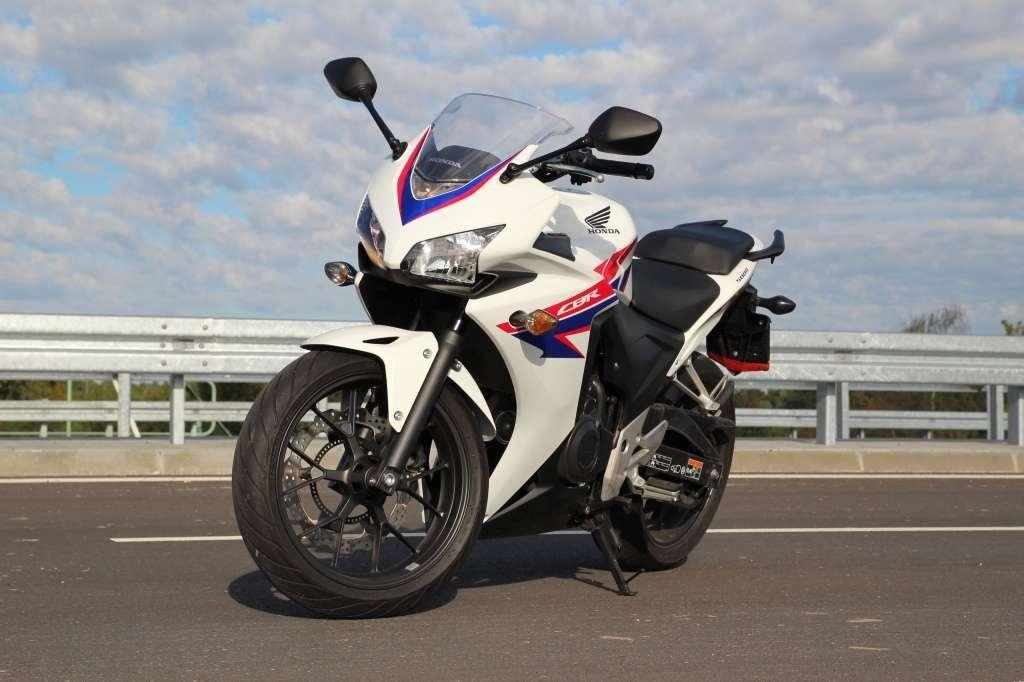
Seat Leon ST FR — Leon transporter
The third generation Seat Leon has a station wagon version. The car has a dynamic silhouette, it steers well, and when necessary it can be economical. So what's the ideal version? Not completely.
The Skoda Octavia Combi is parked on just about every corner, and the Volkswagen Golf Variant—like the regular Golf—usually doesn't pick up anyone's pulse. Fortunately, there is a brand in the group that uses tried and proven VW solutions, and at the same time a little more emotional. For example Leona Set ST we're testing how much fun a combo built on the MQB platform can bring you.
We received a sports version of FR (Formula Racing) for testing. It is distinguished from the rest by additional inserts (modified bumpers, FR badges on the grille and steering wheel, door sills) and large 18-inch alloy wheels. The front of the car has remained unchanged compared to the hatchback and still attracts with its dynamic look. An important role here is played by the shape of the headlights, which use LEDs instead of incandescent bulbs (and xenon burners). It all looks very impressive, but when driving at night, we got the impression that the range of the lights should be a little more.
The Leon has a compact silhouette, but certainly looks more impressive than its sister Octavia Combi. The tailgate has a fairly large angle of inclination, which is designed to give the Leon ST an even more aggressive character. Unfortunately, this solution also has weaknesses, as it limits the functionality a bit. The trunk is very roomy - 587 liters, after unfolding the sofa, its capacity increases to 1470 liters - but it is easier to load a large and heavy washing machine into Octavia. The Leona's trunk is fully adjustable to the window line, and the low loading threshold, combined with a flat surface, makes it much easier to use. Praise is given to the practical handles that make it easy to tilt the couch. The rear end with distinctive narrow taillights neatly completes the look. The only thing we didn't like was the muscular shape of the bumper, which visually expands the lower part of the body and makes it a bit heavier.
When we got behind the wheel, we felt a little… at home. It is simple, functional and at the same time familiar. This is an advantage of most Volkswagen Group vehicles. They have all the main elements located in the same way, and at the same time correctly and ergonomically. Only a long time to develop an on-board computer. It is controlled from the steering wheel - a convenient system, but at first not very intuitive, it takes a minute to think. Much of the information is also available on the multifunction display (integrated with navigation). The dashboard, unlike the exterior, is not stylistically pretentious, but attracts attention. An interesting solution is the center console, which is "sporty" focused on the driver. Finishing materials and quality of fit of elements have improved compared to the previous version of Leon, but the center console is too hard and unpleasant to the touch. The steering wheel, flattened at the bottom, lies pleasantly in the hands and ... encourages dynamic driving.
The amount of space in the front seats is satisfactory - everyone should find the optimal position for themselves. The test version was equipped with sports seats that provide comfort and good lateral support. The rear bench is a bit worse, as there's no room for knees when the front seats are set far back - the low, sloping roofline also limits headroom. Illumination of the side doors adds to the cheerful atmosphere. This is just a stylistic addition, but in the evening it has a positive effect on the mood of the driver and passengers. It is worth noting the high level of passive safety, because in addition to the standard front and side airbags and curtains, the Spaniards also used an airbag to protect the driver's knees. The tested version includes active cruise control with adjustable distance, etc. lane assistant. The armrest is located ergonomically - it unloads the right hand without interfering with gear shifting. There are two places for drinks in the middle tunnel. There are no complaints about the Seat Sound audio system (option). It is pleasing to the ear and has an optional built-in subwoofer. Our test seat also featured a panoramic sunroof. This is a useful gadget that allows passengers to enjoy the long minutes spent in the car.
dynamic swallow Leoni ST FR pure pleasure. 180 HP and 250 Nm of torque, already available at 1500 rpm, make a dynamic start from place to place a piece of cake. The wide rpm range, where the driver has the maximum available torque, makes this unit versatile. Unfortunately, we were a bit disappointed with the car's response in the lower engine speed range. The first "hundred" appeared on the counter in about eight seconds - this is a very worthy result (acceleration measurements are available in our video test). The maximum speed is 226 km/h. The gearbox works precisely, prompting the driver to change gears frequently and crank the engine up to high revs. The engine purrs nicely without being too pushy, but the FR version could use a slightly more thoroughbred exhaust system. However, good performance is not everything, because the car must be predictable on the road. Seat did a great job with this task, because cornering with the Leon ST is a real pleasure - you don’t feel any understeer or unpleasant rear bounce. Already in the basic versions, it is not bad, but here we get an additionally reinforced, multi-link suspension (versions with less powerful engines have a torsion beam at the rear).
Combustion? When driving hard, you can forget about the result declared by the manufacturer (5,9 l / 100 km). Frequent pressing the pedal to the floor means a consumption of 9-9,5 l / 100 km, but given the capabilities of the unit, this is still a good result. When you want to arrange a driving competition "for a drop", only then the values will approach those declared by the manufacturer. During our test, the car consumed an average of 7,5 l/100 km in the combined cycle and about 8,5 l/100 km in the city (under moderate use). Interestingly, the driver can choose one of four driving modes: Normal, Sport, Eco and individual - in each of them, the car changes its parameters depending on our preferences. In individual settings, the characteristics of the engine, steering and suspension are changed. Engine sound and interior lighting (white or red) are also different.
See more in films
If we talk about the shortcomings of the drive system, then the main disappointment was ... the lack of telescopes to facilitate opening the hood. Although this could be forgiven in poorer equipment options, the need to look for a foothold spoils the Leon's image a bit.
To sum up: the Leon ST example shows that even a family station wagon can have character and stand out from the crowd. If it is armed with a powerful engine and good suspension, even drivers with a sports mindset will not be ashamed of it.

